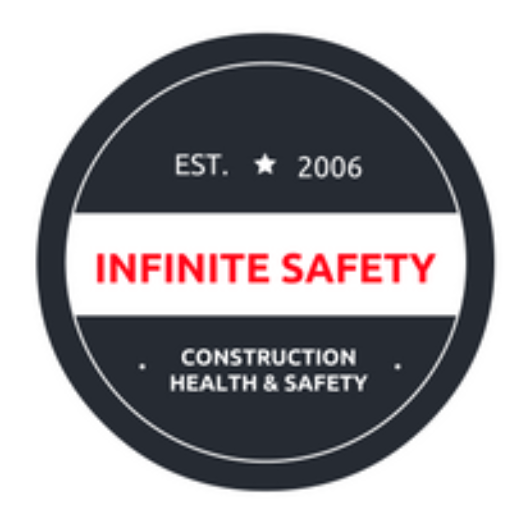How to Write a Risk Assessment
You can be writing Perfect, Pass First Time, Risk Assessments by following our six step solution.
Risk Assessments and Method Statements are most commonly requested for Construction Work. Many companies don’t have their safety consultant prepare site paperwork such as risk assessments and method statements for them, they prefer to save a few quid and go it alone.
If you can get a Risk Assessment right first time, this is great!
But many sub-contractors don’t get it right and find the paperwork being returned for amendment. Fine if you’re ahead of yourself, but most trades do turn up on site expecting to start work immediately. As a Safety Manager, this reflects poorly if your paperwork is returned time after time.
So how do you get a Risk Assessment right first time?
Stick with this if you are serious about writing your own risk assessments. It will take about 15 minutes to read this whole mini-training but if you fully understand why you need to supply the risk assessment, you will succeed in writing an assessment that ticks all your clients boxes. If you want to bail out and have someone write the risk assessment for you, check out the download shop for your trade by clicking here.
In this mini-training, we’re going to look at:
- The Purpose of the Risk Assessment Process
- The Information Required to Write Effective, Suitable and Sufficient Risk Assessments
- Understanding the Requirements
- The documents Required
- Evidence of Competence
- Final Checks
So, Let’s Get Started…
- Understand the Purpose of the Risk Assessment Process
The risk assessment and method statement for a job serve a few purposes:
- Meeting the requirement of the employer to provide a safe system of work (Health and Safety at Work Act)
- Meeting the requirement to risk assess tasks to be undertaken by employees (Management of Health and Safety at Work Regulations)
- Meeting the requirement of the employer to communicate with the employee (Health and Safety at Work Act)
- Meeting the Principal Contractor’s requirement to ensure the works on site are planned and managed (Construction (Design & Management) Regulations)
A diligent Principal Contractor will ensure all sub-contractors on site have a suitable and sufficient risk assessment in place which has been signed onto by all their employees. Works will not be permitted to proceed until this is in place. However, it is presumed by many that everyone knows how to write a risk assessment and this is not the case.
The decision on if it is suitable and sufficient can lie with the Site Manager or the Health and Safety Manager dependent on the company. We check the sub-contractors risk assessments and method statements for all our Principal Contractor clients before they are sent to site. Most we pass, but if not, we advise on what is missing and why we don’t consider the documents to be suitable and sufficient.
Suitable and sufficient means it is
- relevant to the work that is being done
- covers the risks involved in that job process
- has control measures specified that are reasonably practicable (the cost of the control measure is reasonable versus the potential harm that could be incurred)
Understanding that the risk assessment and method statement will be checked, is the most important thing to understand here, but it is a concept which will serve you well and help build your professionalism and credibility. If your documents fail to meet the suitable and sufficient standard and need rewriting on a regular basis, your client will question your ability and knowledge. Your client will remember you as the sub-contractor who doesn’t meet the basic requirements.
Pro-Tip 1 on Writing a Suitable and Sufficient Risk Assessment
The person checking the documents will have a checksheet to ensure every requirement is met. If you can get hold of that checksheet, you can meet every requirement and get the job done right first time. There’s not usually any problem with getting the checksheet, you just need to ask. So, just call them and ask to speak to the Health and Safety Manager. They will appreciate you taking the time to do this as it means they are highly likely to only have to check the documents once. Trust me, when you’ve a stack of risk assessments and method statements to appraise, you really appreciate the sub-contractors that provide documents which meet your criteria.
- Be Prepared With All the Information
To fully meet the suitable and sufficient standard and the criteria of the person assessing the documents, either a Pre-construction information pack or a pre-start meeting will be required. Looking on Google Earth and reading the quotation is not enough! Ask for the information you need. You need to know what access equipment will be used, if lighting is provided, where are the power points, what are the permit requirements. This is not a list. This is just a few examples of what needs to be communicated.
Most Safety Managers, myself included, work from a template document and fill in the site specific information. Some Safety Managers, work purely from the checksheet and produce different looking documents dependent on the items on the list. I take the first approach as I find it a faster way to turn work around. I find producing a bespoke document each time is reinventing the wheel on a frequent basis. That’s me though, that’s how I do it, we’re all different. It doesn’t mean it’s the right way, it just means it’s the right way for me and my clients.
- Understand The Requirements and Double Check
So when you’ve got your checklist, you need to work through it thoroughly. Not “that should do” or “I think that’s what they need” but thoroughly. Read the requirement and think about why that information needs to be there. It might be to give the Principal Contractor information, such as emergency contact information, or it might be to give employees access details, such as which areas are out of bounds.
Pro-Tip 2 on How To Write a Risk Assessment
Layout your documents so they are easy to understand. The main aim of the document is to communicate information to the people who need it ie. The employees doing the work and the principal contractor supervising the works.
- Be Thorough – Include all the Documents Required
A risk assessment on the task is not enough. You need to include Manual Handling, Work at Height, Coshh, PPE and, dependent on your trade, Noise Risk Assessments.
The task risk assessment should detail the hazards, harms and control measures for undertaking the task. If you haven’t got your hands on our Risk Assessment Cheatsheets, it would be a good idea to get it now. The cheatsheets list common hazards, harms and control measures for a range of common activities.
The Manual Handling Risk Assessment needs to be provided to demonstrate how each manual handling element of the task is being controlled to reduce the manual handling undertaken by operatives.
The Work at Height Risk Assessment needs to show how the Hierarchy of Control has been followed to reduce the risk of working at height. ie. collective fall protection such as a general access scaffold rather than one guy with a harness, lanyard and ladder.
The CoSHH Assessment should show the product information in an easily understandable way and also show again how the Hierarchy of Control has been followed to select the product used. The first aid measures are the most important info on a CoSHH assessment in my opinion.
A Personal Protective Equipment assessment should be provided to detail the type of PPE required to undertake the task. Reference should be made to the PPE required in the task risk assessment but the PPE assessment details the equipment required. The best example of this is the attenuation specification required on hearing protection.
- Evidence of Competence
Principal contractors will also want to know that the employees undertaking the work are competent and that the equipment used is safe.
Therefore you will need to provide:
- Evidence of training (CSCS Cards, Trade Membership numbers/cards)
- Work equipment registers (including last test dates)
- Thorough inspection registers for lifting equipment
- Proof of qualification for inspectors (PASMA)
- Proof of qualification for plant operators (IPAF, CPCS)
And, please, please check expiration dates. Don’t send out of date information, it’s unprofessional and gives the impression of a rushed job.
- Check The Document
Many risk assessments and method statements for site work do not pass because they contain the wrong names. Wrong site name, wrong address, wrong employee names. These fail straight away as if the basic information is wrong, chances are there isn’t the level of detail required.
Check, check and triple check the document before you submit it. Check it against your own standard of work, check it against the checklist of the person appraising it, check all the evidence is there and valid, then check it again!
It IS Worth the Effort.
It is a lot of work to get this done initially, but as you gain experience and knowledge, you can speed up this process. A little organization goes a long way, particularly if you are pulling these documents together regularly.
Pro-Tip 3 on How To Write a Risk Assessment
Set up a folder on your laptop or tablet which contains all the commonly used documents in, such as training certificates, coshh assessments and your insurances.
The Buck Stops with YOU
It is vital to remember that this process is not just to tick a box for a client. There are a lot of legal duties which are fulfilled with these documents and this process. Likewise, insurance companies expect their clients to comply with the law. By setting operatives to work without suitable and sufficient risk assessments and method statements the insurances may be invalid and you may not be covered in the event of an accident or personal injury claim
Next Steps to Take
If you want to write your own risk assessment you can get a blank risk assessment form here and you can download my risk assessment cheat sheet here.
If you don’t want to write your own risk assessments you can go for my membership option. Pay monthly for a minimum of 12 months and receive documents, written for you, specific to your sites when you need them. You’ll also receive:
- Named Competent Person
- Bespoke Health and Safety Policy
- Bespoke Trade Risk Assessments
- Bespoke Trade Method Statements
- Produced to Order Site Specific Risk Assessments & Method Statements
- Coshh Assessments
- Work at Height Risk Assessments
- Manual Handling Risk Assessments
- PPE Risk Assessments
- Noise Assessments
- RIDDOR Reporting when necessary
- Training Matrix
- Training Record Keeping Form
- Asbestos Policy
- Asbestos Register
- Accident Flow Chart Procedure
- Accident report Form
- Accident Investigation Workbook
- Lessons Learnt Template
- Site Inspection Forms and How To Guide
- Equipment Inspection Guide and Forms
- Fire Risk Assessment Workbook
- Sub-contractor Health and Safety Requirements
- Sub-contractor Health and Safety Sign on Forms
- Pre-Qualification Questionnaire for your subcontractors
- Safety Meeting Agenda
- Safety Meeting Minutes Template
- 12 Toolbox Talks and Registers
- 12 Safety Updates
- Site Pre-Start Checklist including Welfare Requirements
The documents and services provided are for a minimum term of 12 months and payment is made by monthly direct debit. You can sign up here and we can have all your documentation in place within 14 working days.

